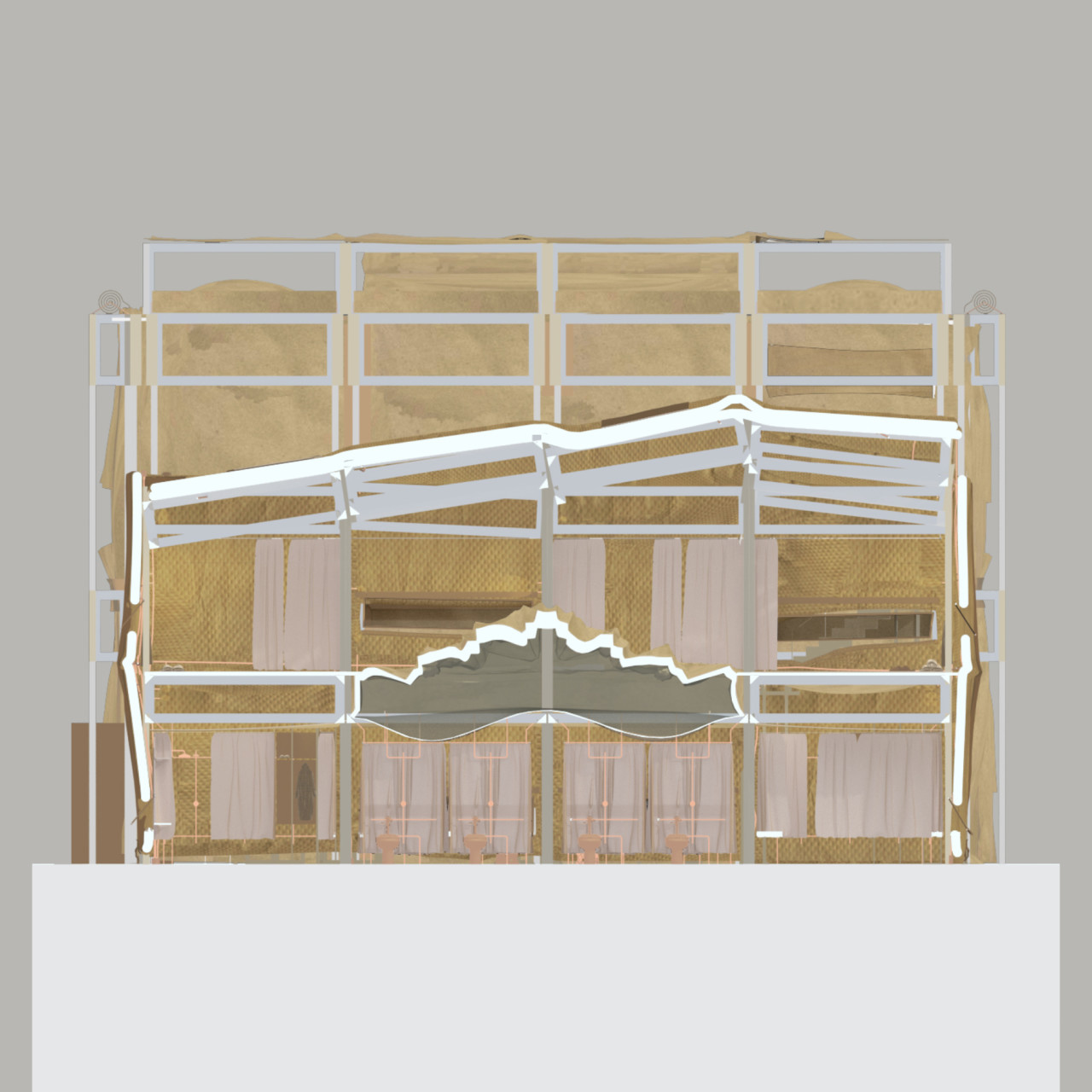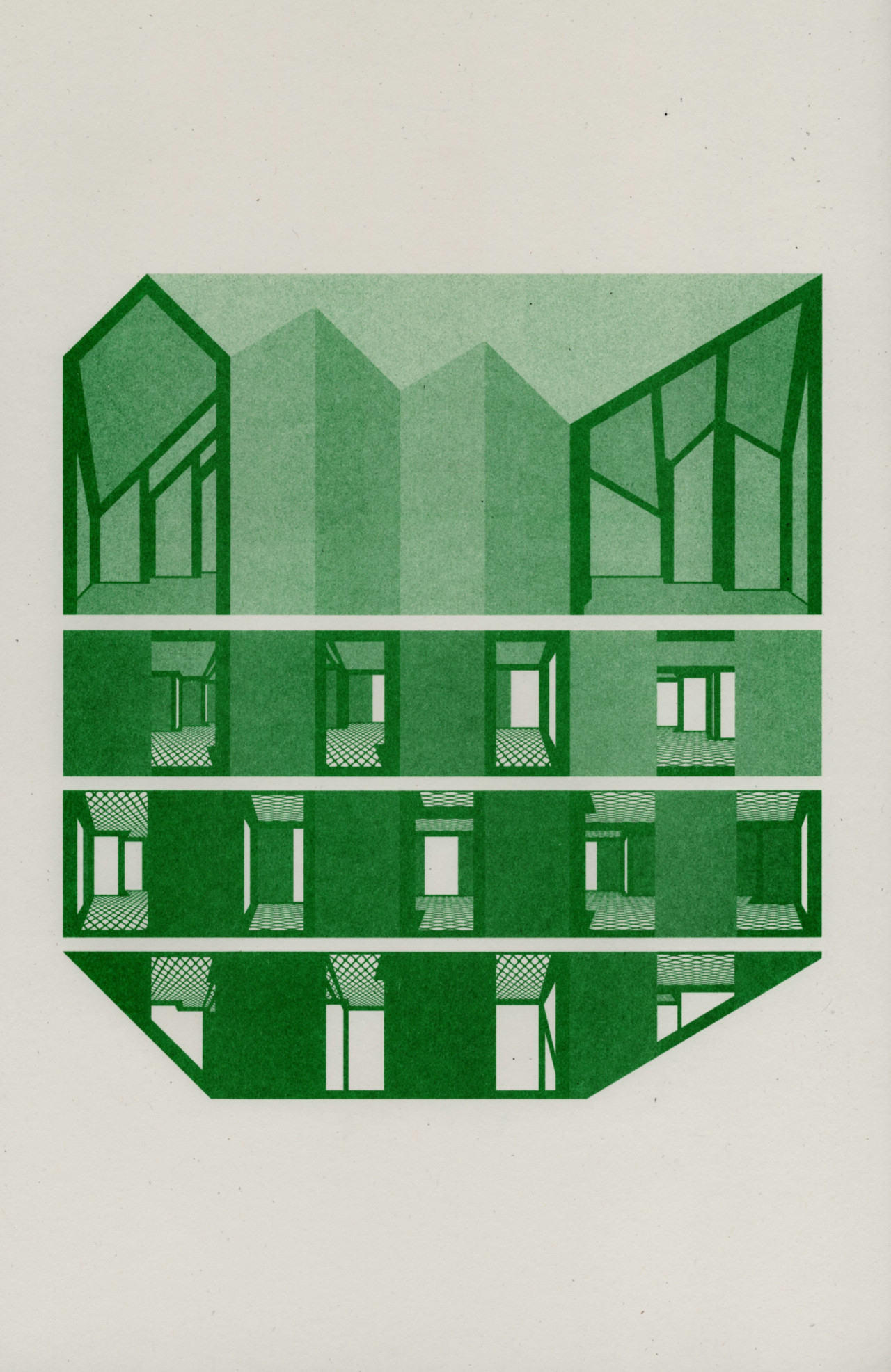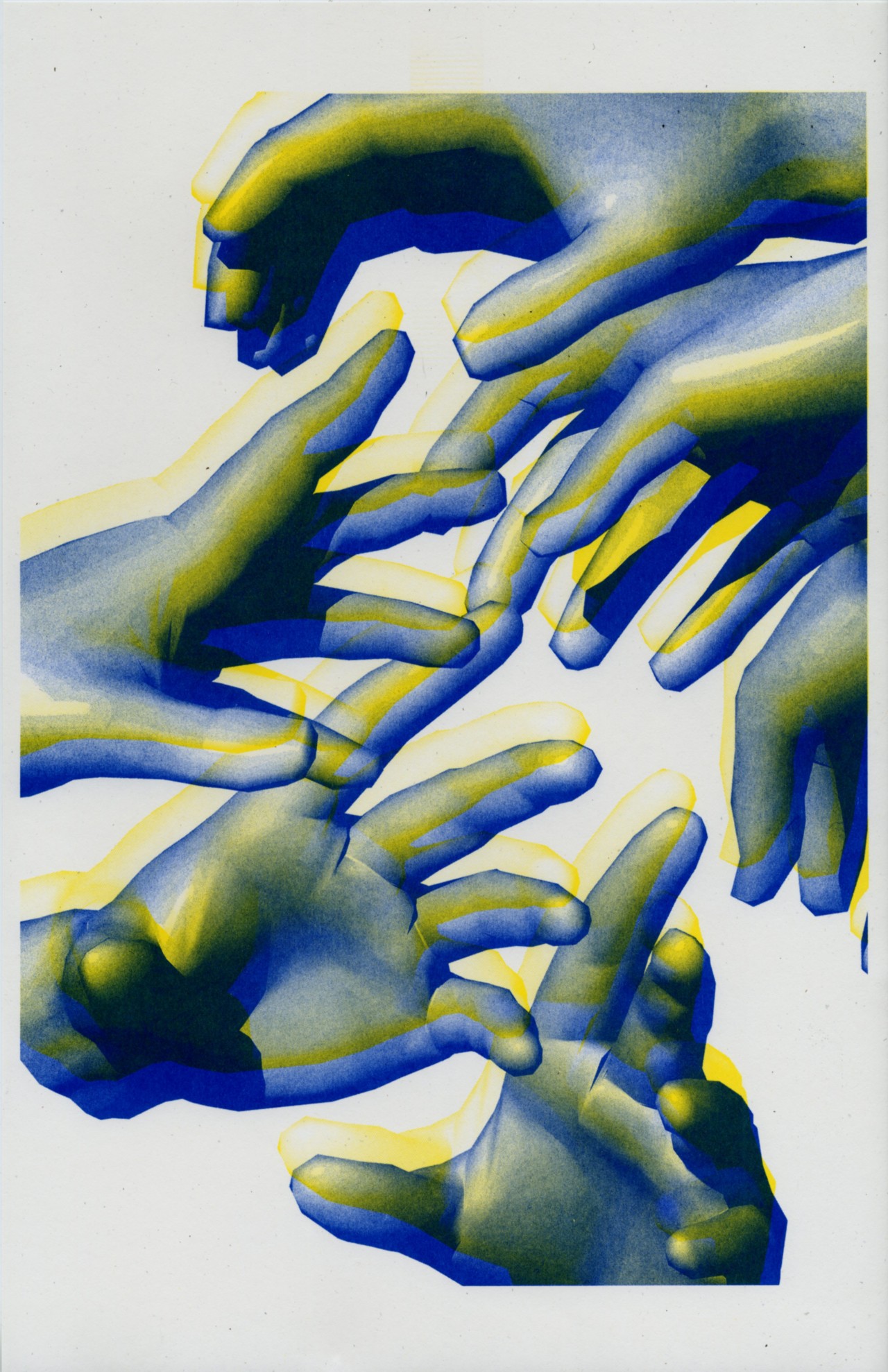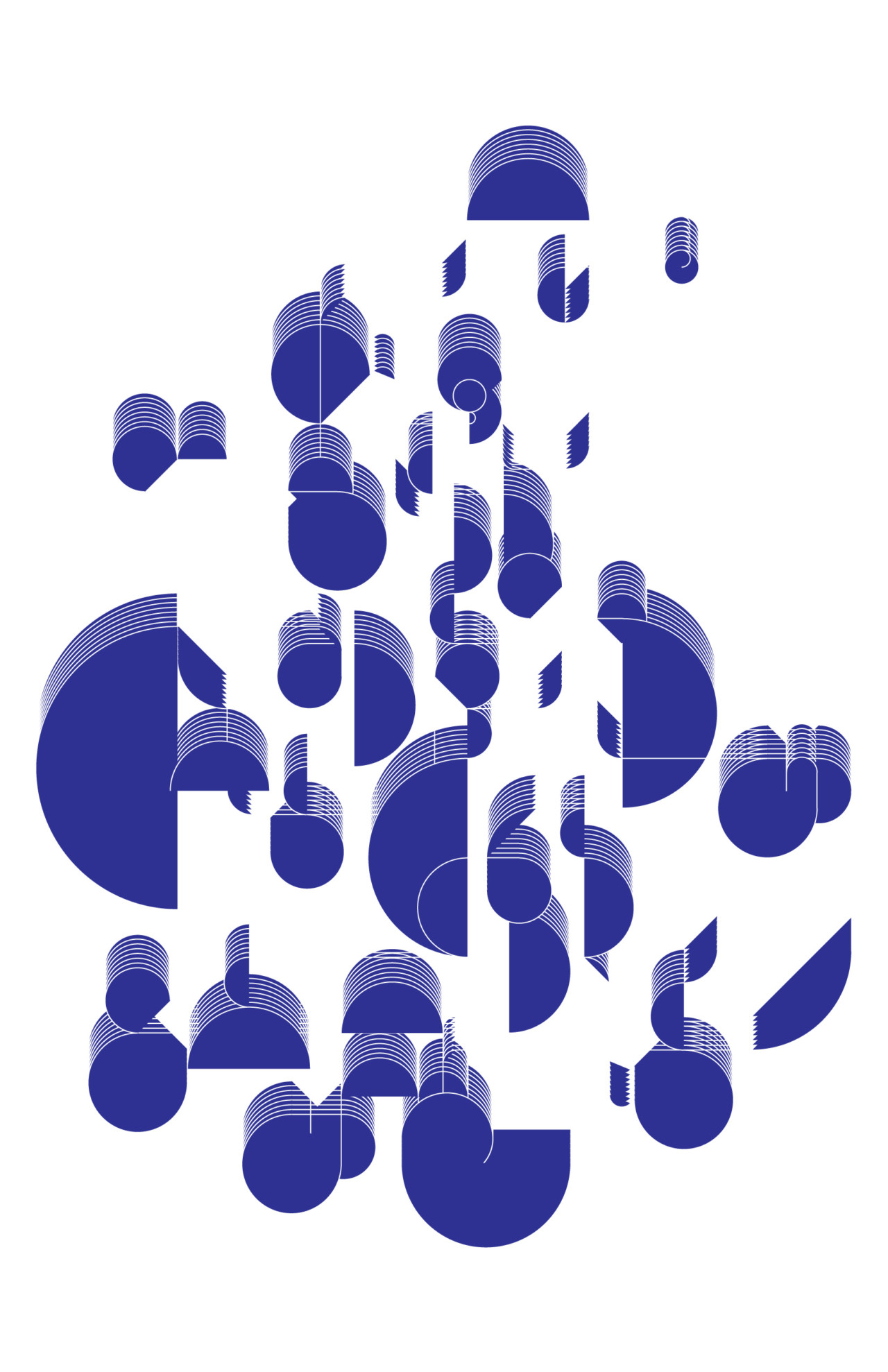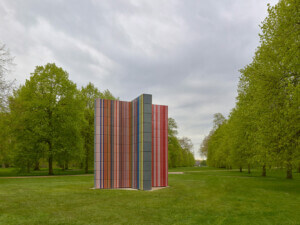a83, a nascent New York City organization describing itself as being “like a 3-legged dog standing loyally at your side, slightly wobbly,” launches its inaugural exhibition, Working Remotely, today at its eponymous gallery space-archive–printshop at 83 Grand Street in Soho.
Assuming an expressly independent stance, a83 was co-founded earlier this year by Owen Nichols, Clara Syme, and Phillip Denny as a vehicle—one orbiting outside of the confines of New York’s academic institutions and professional circles—in which to exhibit, publish, and promote experimental projects from emerging voices in architecture, art, and design.
Until recently, 83 Grand Street was the site of a high-end commercial art gallery. The storefront space’s tripartite function under a83 as an archive, exhibition venue, and printshop is something of a return to form—and with a familial twist. From 1978 to 1992, the address was the home of John Nichols Printmakers and Publishers, a venerable gallery, printer, and publishing house that produced and exhibited early works by a slew of noted architects, some of which are now household names: Michael Graves, Frank Gehry, Thom Mayne, Elizabeth Diller, Steven Holl, Peter Eisenman, and others.
“The gallery was always interested in producing images as opposed to selling work in a commercial way,” explained Owen Nichols, an artist and architect who is the son of John Nichols. “It was working in the same area as the Max Protech Gallery but didn’t have the same ambitions as that gallery to sell work—it was always oriented toward people learning about printmaking and getting institutions involved to introduce younger architects to different forms of image-making.”
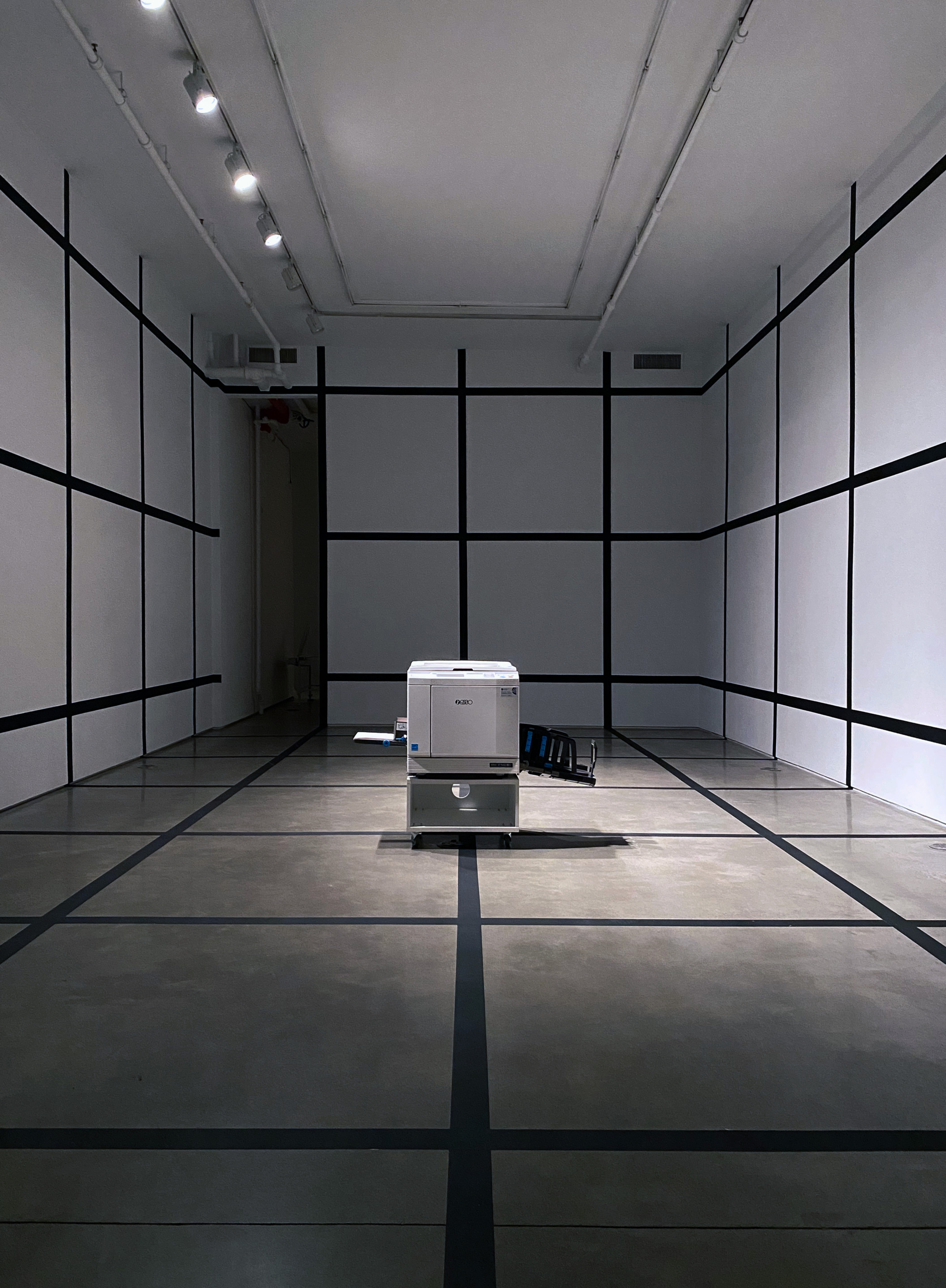
Not surprising considering his pedagogical leaning, the elder Nichols went on to teach at the Princeton School of Architecture and eventually moved his entire printshop from Manhattan to Princeton. The space at 83 Grand Street, owned by Nichols through a 1970s-era artist-in-residence co-op arrangement, was subsequently rented to another gallery, and that lease has since ended.
With Working Remotely, a submission-based exhibition that will continue to accept and add new work on a rolling basis until it closes on October 1, a83 will formally reactivate the space as something more closely resembling a next-generation John Nichols Printmakers and Publishers with an even greater emphasis on experimentation and creative support.
“We’re essentially reoccupying the space and trying to restart the John Nichols Gallery with a slightly different name but having the same ambitions,” said the younger Nichols.
In realizing Working Remotely, the a83 team divided the gallery space into a six foot-by-six foot grid so that visitors can maintain social distancing while viewing work that, as the exhibition name implies, is reflective of our new sequestered reality.
As a83 explained it:
“As we Zoom into the new normal, a83 hits pause to consider what it means to work remotely. Whether locked out of schools or workplaces, the coronavirus pandemic has produced all manner of dislocations. The home has become a workplace, school, studio, gym, bar, … all taking place within the four corners of your computer screen. “Working Remotely” is an opportunity for artists and designers to share their work off-screen. a83 presses print (Ctrl+P / ⌘P) to materially document this moment and reflect on its effects in the areas of architecture and design through the production of a living archive.”
Five works debuting at the exhibition opening have been shared with AN and can be seen in the above slideshow.
As mentioned, a83 will continue to actively seek out submissions—drawings, photographs, emails, screenshots, texts, and “or any other documents of your life and work this year”—through the run of the exhibition. (Submission details can be found on the a83 website.)
“Working Remotely is a chance for people to show their work off-screen together in a space at a moment when we can’t really do that face-to-face and in-person,” elaborated Denny, an architectural historian, critic, and writer who is currently pursuing his PhD in Architecture at the Harvard Graduate School of Design.
As work is accepted, a83, in a performative aspect of the show, will print each piece from a Risograph on the gallery floor before mounting it on the wall. “As we receive work with the rolling deadline, we’ll be performing the printing of the work and filling out the gallery,” said Syme, a Princeton-trained architect working in New York.
Meanwhile, those who wish to view the mushrooming collection from home can have a reproduction of each new work sent to them after it goes on view in the gallery via a mailed newsletter subscription. In addition to new work, the subscription also includes letter-based conversations with curators and collaborators conducted as part of a83’s “Keep in Touch” interview series.
“We’re trying to integrate as many opportunities as possible for people to view and experience the show without actually having to come into the space or come to New York if it makes them feel uncomfortable,” added Syme.
In addition to hosting Working Remotely and future exhibitions and workshops in its gallery space, a83 maintains a print shop specializing in architectural and fine art imaging and an archival operation that’s now processing the 10,000-plus-work-strong archive of John Nichols Printmakers and Publishers with the aim to make it available for educational and research purposes. (Proceeds from the printing end support a83’s archival and exhibition activities.) At the same time, a83’s archival arm is acquiring new works including prints produced for exhibitions including those in Working Remotely.
“At the end,” said Denny, “we’ll have something that reflects this moment but also might be useful for future generations and future research.”






